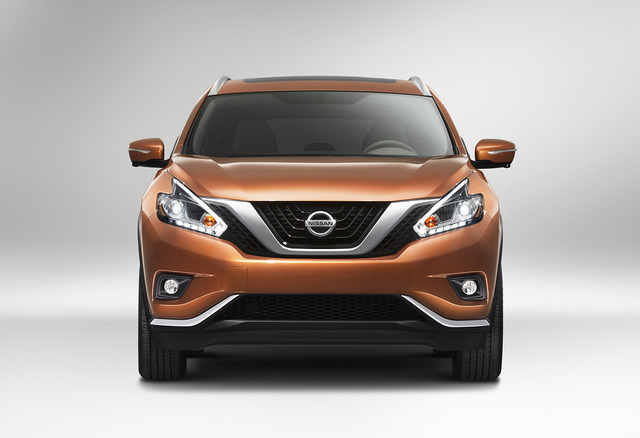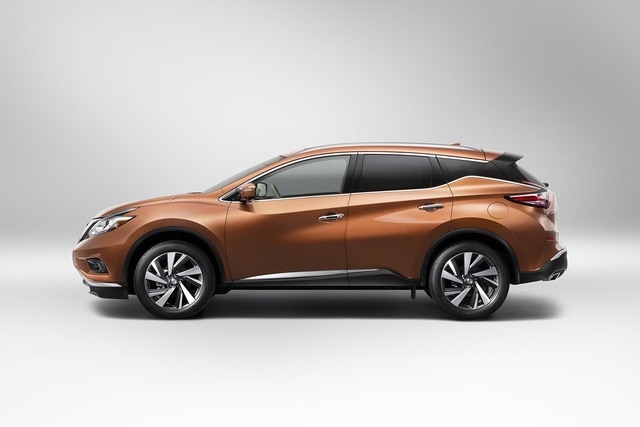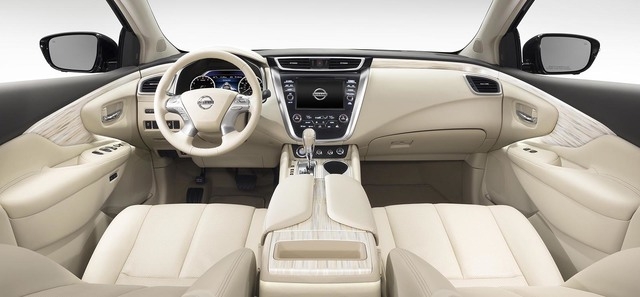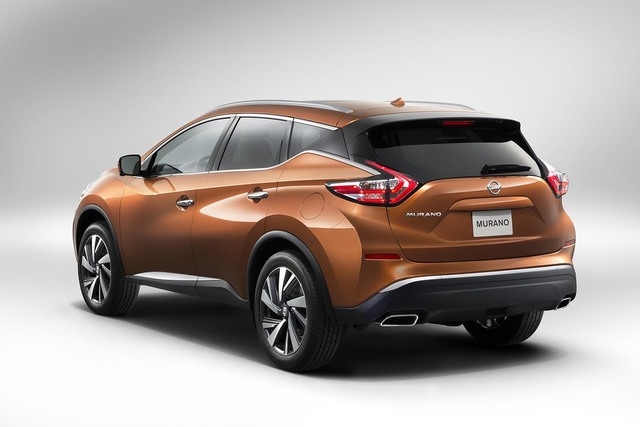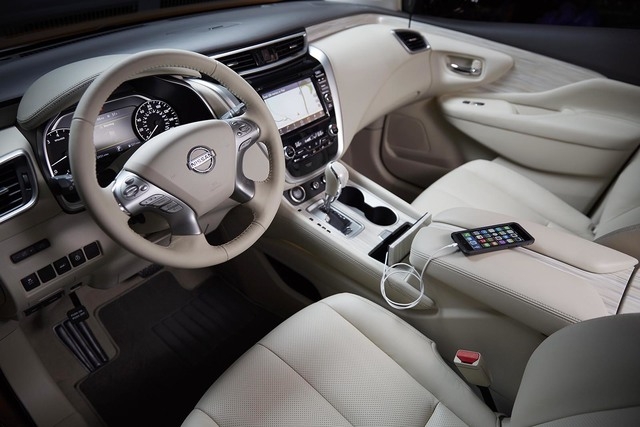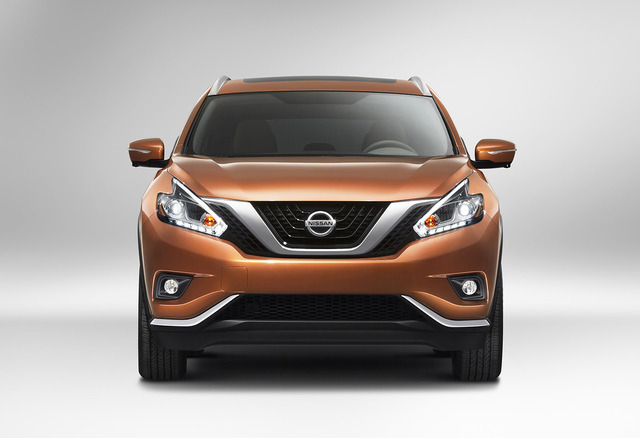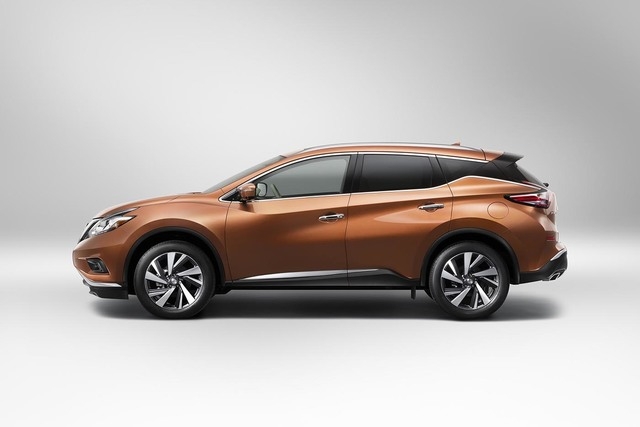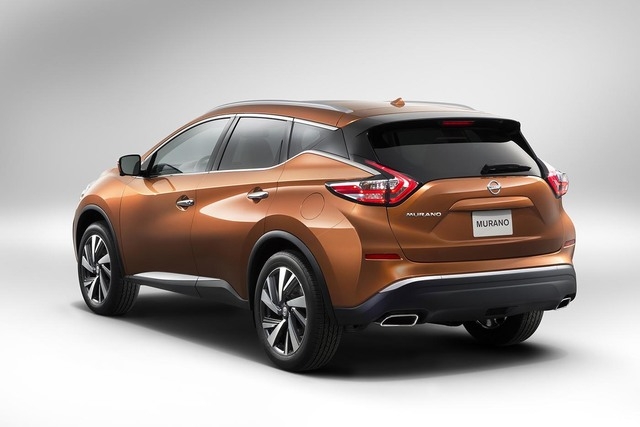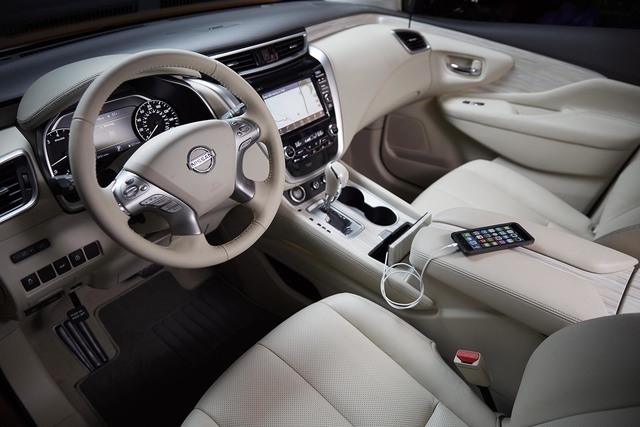Murano plots new course
Above all else, the Nissan Murano was originally created to appeal primarily to the buyer’s heart and not their heads.
The eye-appealing five-passenger tall wagon remained true to this philosophy through its 2003 and 2009 model-year iterations, but charts a uniquely dissimilar course for 2015.
For the first really major overhaul, Nissan’s designers have left virtually nothing on the table from the Murano’s previous shape. Some comparisons could be made to the automaker’s more conservative seven-passenger Pathfinder or compact five-seat Rogue models, but neither one compares to the new Murano’s exaggerated front-end styling with its in-your-face chrome grille and less-than-subtle irregularly shaped “boomerang” headlight pods (the taillights are also similarly shaped). The crisply creased sheetmetal that extends along the door panels is interrupted by a fin-like hitch that seemingly rises into the rear-most side glass. Yes, it adds to the Murano’s overall distinctiveness, but at the expense of reducing the driver’s line of sight at the corners.
On the other hand, lowering the instrument panel and enlarging the windshield enhances the forward view. It should also be noted that Nissan has managed to reduce the number of audio and navigation switches to 10 from 25, no doubt integrating many functions into the touch-screen display.
Those aboard are also treated to accommodations that qualify as sumptuous, especially when the Murano is speced out with leather seat coverings (climate-controlled in front) and the sounds emanating from the optional 11-speaker Bose audio system wafting through the cabin.
Compared to the outgoing Murano, the 2015 version is identical in distance between the front and rear wheels, but is about three inches longer overall and 1.3 inches wider. But despite a slightly lower roofline, there are major gains (as in about 25 percent) in cargo capacity with the rear seat folded, and eight percent with it in place.
As a bonus, the Murano has shed about 145 pounds that, along with other adjustments, helps it achieve a significantly improved fuel-economy rating of 21 mpg in the city and 28 on the highway for both front- and all-wheel-drive models. Previous ratings were 18/23 for front-wheel-drive and 18/24 for AWD models.
At the heart of the Murano is a 3.5-liter V6 that produces 260 horsepower and 240 pound-feet of torque. That output is modest in this age of advanced direct-injection and turbocharged engines found in competing brands, but it’s adequate in a wagon that now weighs less than 4,000 pounds.
The 3.5’s power is delivered to the front and/or rear wheels via a continuously variable transmission (CVT). The Murano was an early CVT adopter and now gets Nissan’s latest version with built-in “steps” that sort of mimic an actual multi-gear automatic tranny.
There are no steering-column-mounted paddle shifters, but the floor shifter can be used to manually control the faux ratios.
At a starting MSRP of $30,400, the price-leader Murano S comes with the usual assortment of basic content, while for about $3,000 more the SV adds a navigation system, power-adjustable front seats, remote engine start, fog lights and roof rails.
Along with leather seats (heated in front) and an upgraded stereo, the SL has blind-spot warning.
There’s also a 360-degree Around View Monitor with Moving Object Detection that automatically applies the brakes if anyone or anything approaches the vehicle while backing up.
The top-level Platinum serves up heated front and rear seats, a power-folding second-row seat and 20-inch wheels (18-inchers are standard).
Note that AWD is available on all trims, while the panoramic moon roof can be had on all but the S trim.
Ultimately, though, it’s the Murano’s unorthodox appearance that will win over customers, which has been the trend right from the Murano’s early beginnings.



